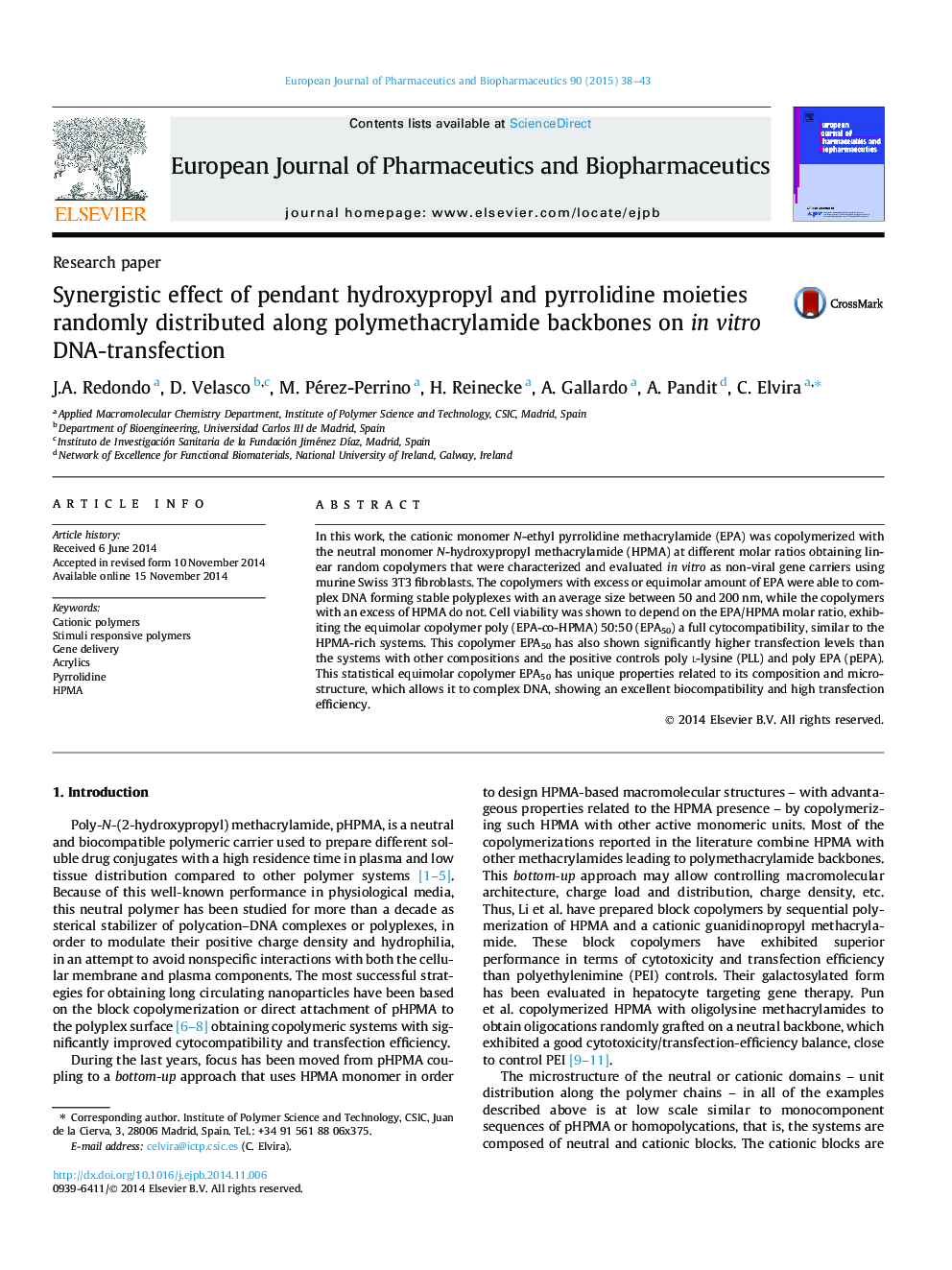| Article ID | Journal | Published Year | Pages | File Type |
|---|---|---|---|---|
| 2083408 | European Journal of Pharmaceutics and Biopharmaceutics | 2015 | 6 Pages |
•We have prepared statistical copolymers of cationic EPA and hydrophilic HPMA.•These copolymers ability to bind DNA depends on their EPA/HPMA molar ratio.•The transfection efficiency and biocompatibility depend on the copolymer composition.•There is compositional synergistic effect on the cell response.•Copolymer EPA50 has unique properties related to its composition and microstructure.
In this work, the cationic monomer N-ethyl pyrrolidine methacrylamide (EPA) was copolymerized with the neutral monomer N-hydroxypropyl methacrylamide (HPMA) at different molar ratios obtaining linear random copolymers that were characterized and evaluated in vitro as non-viral gene carriers using murine Swiss 3T3 fibroblasts. The copolymers with excess or equimolar amount of EPA were able to complex DNA forming stable polyplexes with an average size between 50 and 200 nm, while the copolymers with an excess of HPMA do not. Cell viability was shown to depend on the EPA/HPMA molar ratio, exhibiting the equimolar copolymer poly (EPA-co-HPMA) 50:50 (EPA50) a full cytocompatibility, similar to the HPMA-rich systems. This copolymer EPA50 has also shown significantly higher transfection levels than the systems with other compositions and the positive controls poly l-lysine (PLL) and poly EPA (pEPA). This statistical equimolar copolymer EPA50 has unique properties related to its composition and microstructure, which allows it to complex DNA, showing an excellent biocompatibility and high transfection efficiency.
Graphical abstractFigure optionsDownload full-size imageDownload high-quality image (102 K)Download as PowerPoint slide
